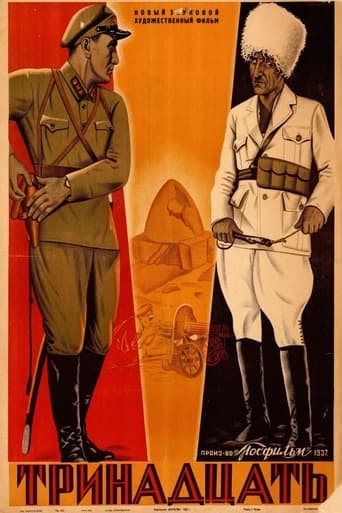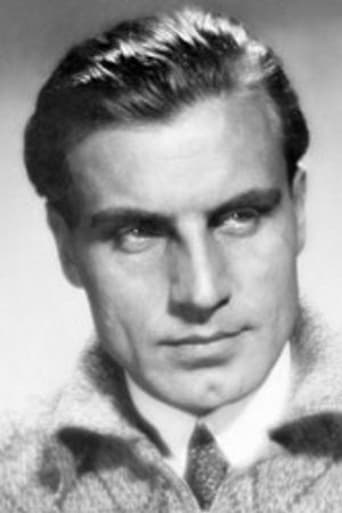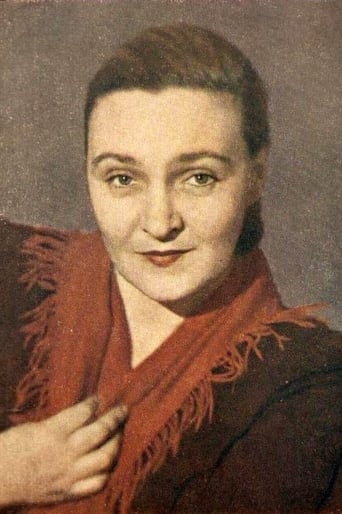

The Thirteen (1937)
The film tells about a band of demobilized Red Army men and two civilians who cross a Middle Asian desert. They are forced to do battle with superior forces of Basmachi rebels for the dry draw-well.
Watch Trailer
Cast
Reviews
Good films always raise compelling questions, whether the format is fiction or documentary fact.
Very good movie overall, highly recommended. Most of the negative reviews don't have any merit and are all pollitically based. Give this movie a chance at least, and it might give you a different perspective.
Exactly the movie you think it is, but not the movie you want it to be.
Great story, amazing characters, superb action, enthralling cinematography. Yes, this is something I am glad I spent money on.
The plot of Trinadsat is also the basis of Bogart's 1943 Tank movie, Sahara. Both films are similar to John Ford's 1934 Lost Patrol about a group of British soldiers who defend an oasis from Arab attackers. Even Ford's film was a remake of earlier version of the Lost Patrol that starred Victor McLaglen's younger brother Cyril. BATAAN (1943), starring Robert Taylor, is a similar film. One should note that Philip MacDonald's novel Patrol is listed as the inspiration of many of these films.This version is about 11 Soviet soldiers and 2 Soviet civilians who are crossing a desert on horse in Central Asia. Like in Sahara, they encounter hostiles (White Russians) and take refuge in ruin with an almost dry well. Although clearly inferior in number, they decide to make a stand against the hostiles in the same fashion as Bogie in Sahara, water for guns. Like John Ford's Lost Patrol, a patrol comes upon the lone survivor almost dead from thirst. Unlike Ford's, the patrol makes the final attack on the hostiles. Since this is a Soviet propaganda film, the message is that the collective transcends the individual. This is shown as each inalterable Soviet hero replaces the dead one before him.


